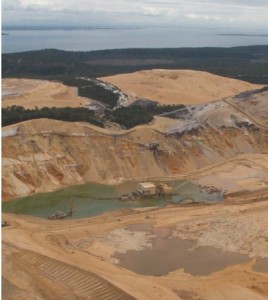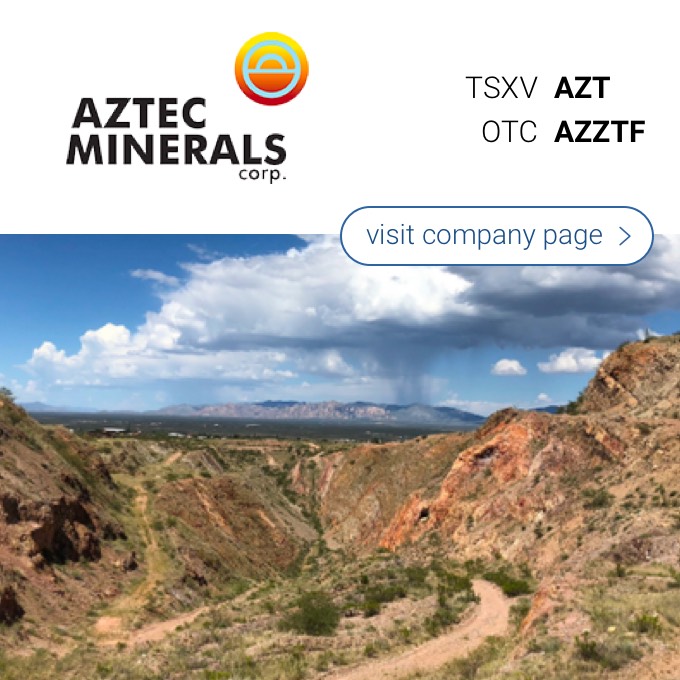Medallion Resources (MDL.V) is planning an entirely new approach to the production of Rare Earth Elements as the company wants to process monazite to recover the REE’s. We sat down with CEO Don Lay for a Q&A Session.
– The REE market pricing converged after China’s most recent change of rules. What do you think will be needed for the REE price to move up again?
Obviously that is a difficult question. However, leaving aside global the supply and demand issues and looking at the specific REE marketplace there will no new supply coming on board at current prices outside China. I have talked to many REE CEOs lately and they all admit that they cannot make a profit on an opex basis at today’s prices. And the Capex challenges for hard-rock producers are monumental now.
So we believe that the market will be profitable for efficient producers in the middle and long term now that China has decided to control their REE resources. That was the big change in 2010 and will probably reverberate for 20 to 30 years. To use a baseball analogy we’re still in the early innings.
– Everybody seems to be expecting a higher demand whilst there simply is no (easy) additional supply.
That’s correct. Outside of recapitalizing of Molycorp which is now happening, or Lynas Corp, which re both producing, we see no new hard-rock supplies hitting the market any time in the next 5 years. There are some marginal new by-product suppliers like Indian Rare Earths, Kazatomprom coming on board but nothing of significant volume. As far as the demand is concerned we feel that the market over time will sort itself out like any other element. If the miners/processors produce quality product and reliable supplies the market will grow for the commodity. Without a doubt there are lots of useful things to do with rare-earths – and more are being developed all the time. So it’s a bit of waiting game for pricing to improve but even the Chinese producers are losing money at today’s prices. That said no one should expect dramatic moves upwards.
– Has there been any impact caused by the new tax in China on REE mining?
Sure there has. The REE juniors that I talk to will actually admit that even if they were in production they couldn’t make money at today’s prices!
But to answer your question; the big change – which was huge – is that there is really a single global market now with respect to pricing. So the huge Chinese separation (refining) capacity (said to be over 200,000 tpa) is likely open for concentrates produced outside of China. I say likely because I don’t know that anyone has tested it yet. But it will play a factor.
My question is: why would anyone build new separation outside of China? It’s like building new refineries in Alberta when we can ship our bitumen to the Gulf Coast that has existing capacity (assuming the US would allow the pipeline of course). But the bottleneck in the sector is not refining; it is in the mining/metallurgy stage whereby companies are trying to produce a chemical rare earth concentrate.
– As several REE’s are on the list of ‘endangered species’ in the USA and the EU, would you be able to benefit from any grant/subsidy of you’d build the pilot plant in North America?
Of course money would help but a well-known name attached to our project would help more. To net it out though our big challenges are twofold:
Doing significant deals with the large producers with 10 year terms and pricing that floats to the oxide market. The bigger players understand the resources they have – for many years they sold their monazite to Rhone-Poulenc in France, before the Chinese drove down the market from 1985 onwards. But that ended in the early 1990’s. So they are fine with doing deals but putting these together takes time. That said we’ve been at it quite a while and have built key relationships.
Showing the marketplace our solution to the “thorium” problem. Everyone in the REE minerals has to deal with radioactivity issue. Ours is somewhat different from the miner that needs to put it back into the mine or devise a tailing solution near the mine. We need to do one of two things – dispose of it at our cost through systems in place here in North America or to work out a deal with a uranium company. Both of these are very doable and my current preference leans towards an arrangement with a uranium processor.
As far as a pilot plant goes I will be exploring that as soon as we release our metallurgical results, which is expected shortly. This should be less than $1,000,000 and should get us through all the technical work for a full FS.
– Both Brazil and Russia (countries with relatively large monazite resources) have a shorter shipping distance from the African resources (where there are some mineral sands producers with monazite as by-product) and probably also have a lower operating cost (lower input costs such as electrical power and labor). Do you think you might encounter competition from those countries?
The biggest economic cost after monazite itself is the chemicals like caustic and hydrochloric acid and labour. But there are many other factors. For one thing if one wants to be processing monazite in a big way you need to convince some of the world’s largest and most conservative London or ASX-listed mining companies to sell you their feedstock.
And they need to know that it will be processed safely and cleanly and that they will never be liable or embarrassed.
Saskatchewan (and a few Western US states) make the list for all the important elements of success. And the costs are just fine. Yes it costs a bit more to ship it inland but the value of contained REO per tonne of monazite about $12,000. The chemicals are available there as they are required in the petrochemical and the pulp and paper business. And the technicians and engineers are happy to get a good job.
– Even after the most recent capital raise the Medallion treasury is running low. Do you feel like the market is betting against you because it knows you will need additional capital?
I think the market has picked a few winners that had a jump on us (Ucore, Rare Element, Tasman) that it feels may “make it”. Conversely it has given up on Avalon and Quest lijely due to the enormous capital requirements. GWG is out of business of course and Toyota is no longer supporting Matamec’s project.
We lost some support when we had to make the necessary shift to North America from the Middle East. Yes, we don’t have a lot of capital but we also have a very low cost base.
The next major expense will be a pilot plant. So it’s really about building some new market support by the market showing a better approach to get to production. I am happy to raise smaller amounts of capital at lower valuations and then build value from here. It is not hard to argue we are vastly undervalued against comps if one really understands the marketplace.
– Isn’t there a risk whereby other players in the sector will copy your business plan?
It is – there are only a few large players to tie up to look in a near-monopoly role. This has to be done over time though, by showing a viable and environmentally sound pathway to economic production.
And all the elements of what we are doing from the deep technical understanding of the minerals sands, the relationships, the monazite metallurgy and even the transport of monazite has many complications. There are lots of things to stitch together here. No one has even come close.
– What’s the insider ownership in Medallion?
It’s about 7% but friends, family and business associates own another 15-20%.
– How much cash would you need in the next 12-18 months and where would that take you?
About $2.5 million would get us through a pilot and plant and a feasibility study. If the money isn’t all available at once we can pace the development.
Disclosure: The author holds no position in Medallion Resources. Please see our disclaimer for current positions.



